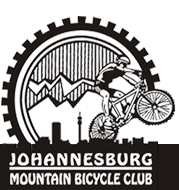Ten Commandments…. of Training
Back to overviewGOAL SETTING
Goals keep you focused. Pick two or three events a year and space them out roughly into different quarters. Do other events too but use them as training or build up rides to your main goal event.
PERIODISATION
Watch the slow pace the pros ride in the early season, but when they get to their racing peak, they are super fast. The secret ? Periodisation. Focus on time in the saddle, not distance.! Your cardiovascular system doesn’t care how far you have gone, just how long it worked for.
KEEP IT FUN
Mix up your rides – make one ride a week a long, soul-searching type of affair, another one a fun group ride with coffee stops, or head for the hills for a change. Variety is key.
BUY A HEART RATE MONITOR.
It’s the best thing you can do to manage your training. It will help you gauge how hard you are going, and, importantly, keep you from going too hard when you need a recovery ride. From R 550, it’s an investment compared to the benefits.
SLEEP MORE
Your body will feel the effects of initial training for the first few weeks. Recovery is as important as effort. Muscle fibres you are breaking down while riding regenerate when you sleep. Allow for an extra hour a day’s sleep, at first.
RECOVERY IS KEY
Recovery is what makes you fit, not riding hard. Balance every hard ride with two easy ones.
MAKE UP IS FOR SISSIES
Never try to squeeze in an extra ride if you missed a workout. It’s gone, let it go. You won’t lose any noticable fitness in two days. Burning yourself out could instead set you back a month.
IMPROVE YOUR SKILLS
Cycling is not just about being fit and fast. Work on your technical skills, on cornering, on riding through thick sand, on bike balance. You’ll be amazed at how much time and places you can make up if riding through and over things that other will get off and walk.
FOOD AND DRINK
Many people make the mistake off only drinking when they race. Wrong !. The same rules apply to training. Drink about 500ml of water or sports drink per hour of riding, and eat an energy bar or energy gel for every hour. Once you have finished, make sure you eat a nutritious meal and have more fluids.
PATIENCE
You may think you are getting nowhere and everybody seems so fit and fast, but you will get there with a conservative, structured approach. We promise. Even Lance Armstrong starts his year with measly two-hour rides and slowly builds up to his brutal 8 hour a day regime. If he didn’t do the easy ones to start, there is no way his body could cope with the hard stuff.
